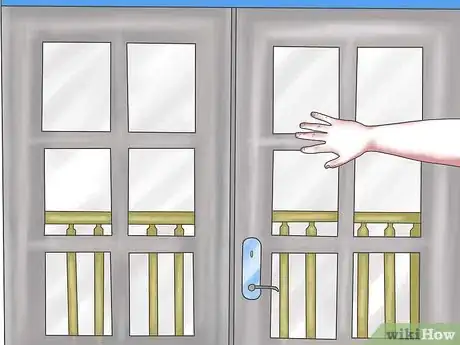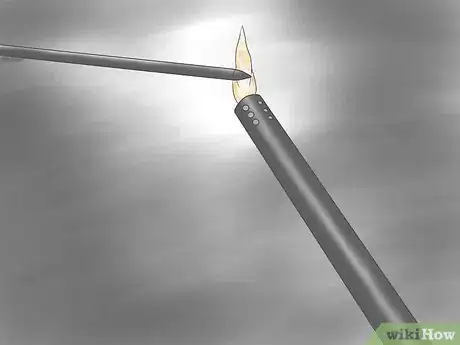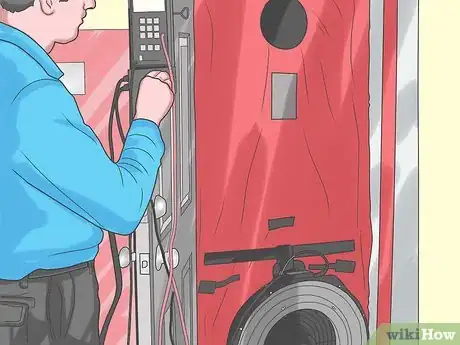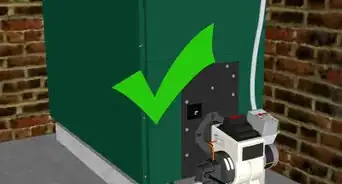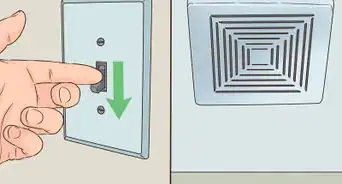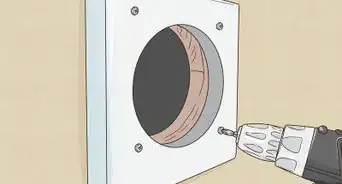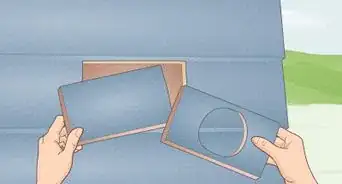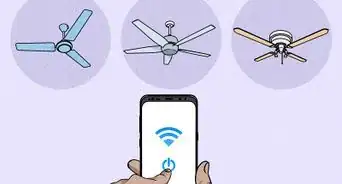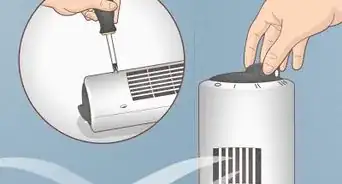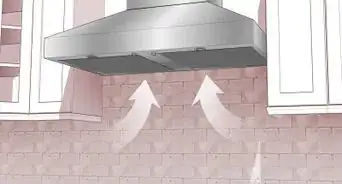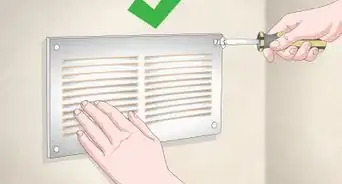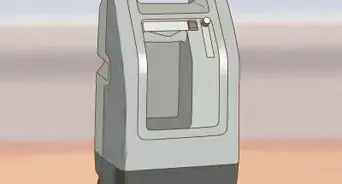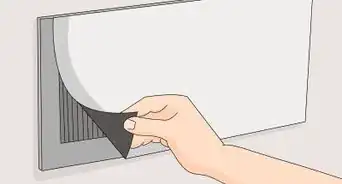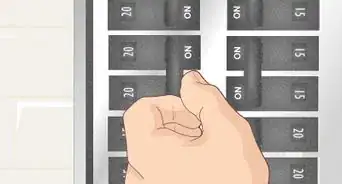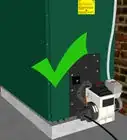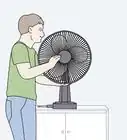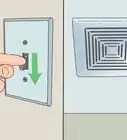wikiHow is a “wiki,” similar to Wikipedia, which means that many of our articles are co-written by multiple authors. To create this article, 9 people, some anonymous, worked to edit and improve it over time.
There are 10 references cited in this article, which can be found at the bottom of the page.
This article has been viewed 130,371 times.
Learn more...
Air leaks in a home can emerge from cracks and openings in doors and windows. Air trapped inside the walls of your home can seep out through floor boards and around electrical outlets. It takes more energy to heat and cool your home if you have air leaks, which will increase your utility bills. To learn how to find air leaks in your home, you will need to conduct tests around your house that involve using your hand, a candle, incense, or an air leak device. Hiring a contractor to conduct more advanced tests will also help you to identify the air leaks in your home.
Steps
-
1Use the hand test to find air leaks.[1]
- On a cold day with the heat on inside your home, place your hand around the edges of all exterior doors, windows, and bathroom and kitchen air vents and fans. If you feel cold air on your hand, then you have an air leak.
- You can also use the hand test to detect leaks around electrical outlets.
- The hand test is best for finding large leaks of air coming into the home.
-
2Find smaller leaks with the candle test.[2]
- Light a candle and walk around your house to places that you think may have air leaks: electrical outlets, light fixtures, around baseboards and crown molding and phone jacks.
- If you are conducting the test on a warm day, turn off your central air conditioning. If it is cold outside, turn off your central heating system before conducting this test. Place the candle near the potential leak, if the light dances around slightly, you have a small leak.
Advertisement -
3Depressurize your house to find links all over your home.[3]
- Choose a day that is cold and windy to complete this test. Turn off the furnace and close all of the windows and exterior doors. Turn on all of the fans in your bathrooms and your kitchen.
- Walk around your house with a lit stick of incense. Pass the incense over the edges of doors, windows, vents and other areas in your house where you suspect air leaks. If the smoke is blown into the house or sucked out, then you have a leak.
-
4Use an air leak detector to find your leaks.
- Turn the device on and point it at the areas where you suspect leaks. A small light coming from the device will scan the area you are pointing at. If there is a leak, the light will turn blue if the leaking air is cold, it will turn red if the leaking air is warm. If there are no leaks the light will not change.[4]
-
5Hire a contractor to do a blower door test.[5]
- The contractor will place a blower door fan in the front entrance of your house to suck out all of the air inside your home (depressurize). This allows outside air to enter the home through the leaks.
- While the house is depressurized, the contractor moves through the house to detect the leaks in the air ducts, dropped ceilings, around utility and plumbing openings, and from interior wall and ceiling joints and floor joists.
- A contractor can also detect air leaks around electrical and gas devices, cable and telephone lines, in air conditioners, and in basements and attics.
Community Q&A
-
QuestionWhere can I find a contractor to do a blower door test?
 DvortygirlCommunity AnswerWe can't recommend a specific contractor for you in your area. See if Angie's List or a similar referral service has an active community near you.
DvortygirlCommunity AnswerWe can't recommend a specific contractor for you in your area. See if Angie's List or a similar referral service has an active community near you. -
QuestionWhat do I do if air is blowing in through my air fan in my home?
 Community AnswerCheck the outside of your home for where the fan exhausts to. Install a cover with flaps if one is not already there.
Community AnswerCheck the outside of your home for where the fan exhausts to. Install a cover with flaps if one is not already there.
Things You'll Need
- candle
- incense
- air leak detector
References
- ↑ https://blog.constellation.com/2016/09/16/how-to-find-air-leaks-in-your-home/
- ↑ https://energyinformative.org/how-to-detect-and-seal-air-leaks-at-home/
- ↑ https://www.energy.gov/energysaver/weatherize/air-sealing-your-home/detecting-air-leaks
- ↑ https://www.youtube.com/watch?v=b8DziaqI9HI
- ↑ https://todayshomeowner.com/video/find-air-leaks-in-your-home-using-a-blower-door-test/
- https://www.energy.gov/energysaver/weatherize/air-sealing-your-home
- https://www.energystar.gov/campaign/seal_insulate/do_it_yourself_guide/locating_air_leaks
- https://www.energystar.gov/campaign/seal_insulate/why_seal_and_insulate
- https://homerepairgeek.com/home-insulation/house-air-leaks.html
